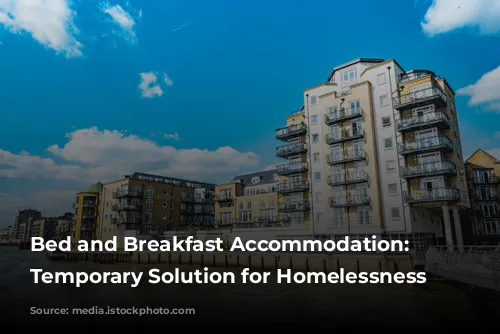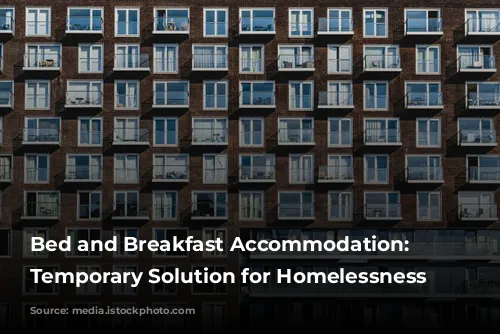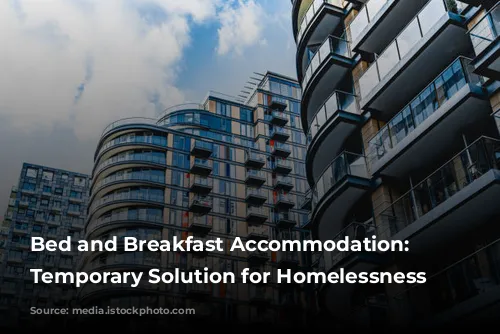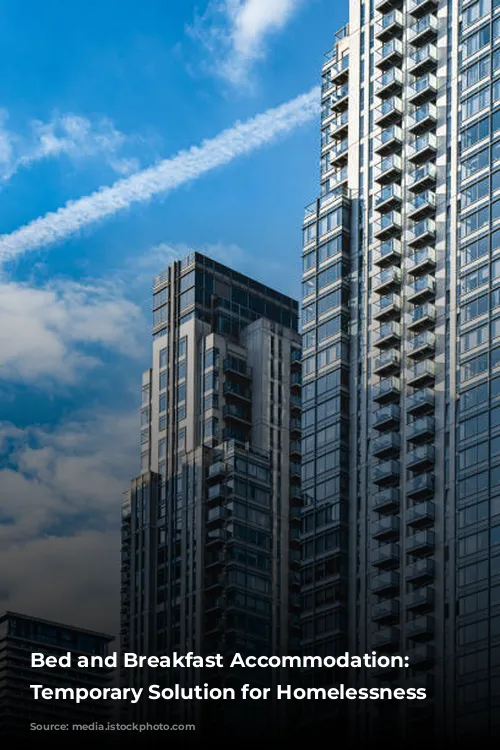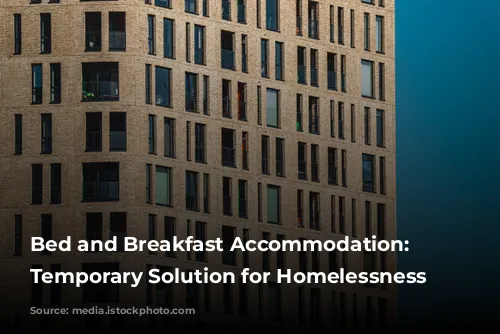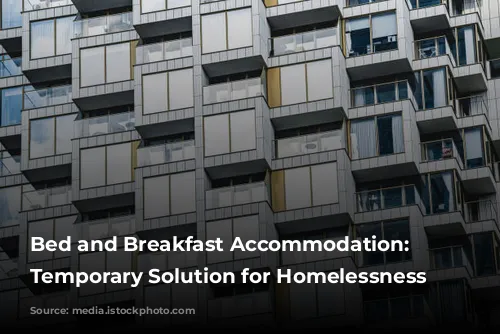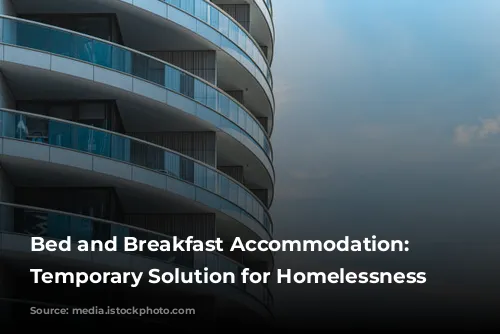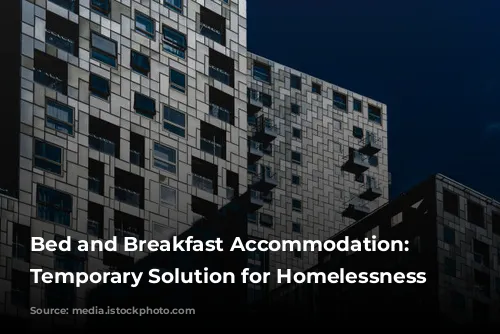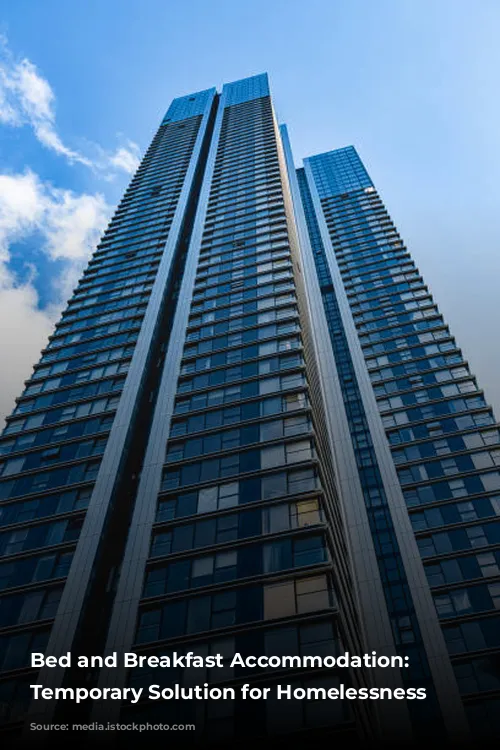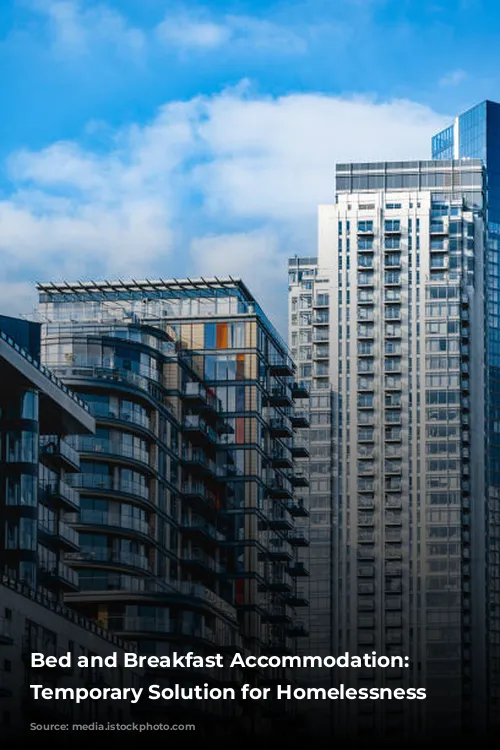Bed and breakfast accommodation is not the ideal solution for homelessness. It is a temporary measure that should only be used in emergencies or when no other suitable housing is available.
The term “bed and breakfast” refers to accommodation that:
- Doesn’t offer separate and self-contained units. This means that shared facilities like toilets, washing areas, and kitchens are common.
- Is not managed by local authorities, registered social landlords, or voluntary organizations.
Since June 2022, private dwellings are also excluded from the definition of bed and breakfast.
When is Bed and Breakfast Suitable?
Bed and breakfast accommodation can be a brief stopgap measure when immediate shelter is needed. It’s crucial to remember that it should not be considered a long-term solution.
While it can be used as a last resort in emergency situations, local authorities should always strive to find alternative accommodation that meets individual needs as quickly as possible.
Specific Rules for Families and Pregnant Women
Bed and breakfast accommodation is not suitable for families with children. This is because the shared living space and lack of privacy can be detrimental to children’s well-being.
Local authorities are required to prioritize alternative accommodation for families and pregnant women. If bed and breakfast is the only option, it must be for a maximum of six weeks.
This rule applies to various homelessness duties, including the interim and main housing duty.
It is important to note that the six-week limit is reset if a person is referred to another local authority.
Furthermore, if a person’s circumstances change within the six-week period, for instance, if a member of the household becomes pregnant, the six-week limit starts from the date the authority is informed.
The six-week limit does not apply to individuals who have arrived in the UK within the past two years.
Safety Standards for Bed and Breakfast Accommodation
When bed and breakfast accommodation is used for homeless individuals, it must adhere to the same health, safety, and overcrowding standards as Houses in Multiple Occupation (HMOs). This means that local authorities must verify the adherence to fire safety regulations before approving the accommodation.
Landlords are responsible for:
- Conducting regular fire risk assessments.
- Maintaining fire safety equipment in good working order.
- Ensuring that furniture and furnishings meet safety standards.
Local authorities are also required to ensure that smoke and carbon monoxide detectors are installed and functioning properly.
Local authorities can set their own minimum standards for bed and breakfast accommodation. This ensures that the accommodation is safe and suitable for temporary use.
Suitability Assessments for Accommodation
When determining the suitability of accommodation offered to homeless individuals, local authorities must consider legal requirements related to:
- The Housing Health and Safety Rating System.
- Licensing of HMOs and other accommodation.
Local authorities should prioritize accommodation that is free of category 1 hazards and deemed fit for human habitation.
While a full inspection under the Housing Health and Safety Rating System is not mandatory, local authorities should assess the need for an inspection based on evidence available, especially when individuals complain about noise or conditions.
Assessing Suitability Over Time
The suitability of accommodation is dynamic and depends on individual circumstances.
Accommodation might be suitable for a short period while the authority seeks alternative options.
However, the same accommodation might not be suitable for longer periods.
This does not mean that temporary accommodation has a lower standard of suitability.
Local authorities must consider the changing needs of individuals and ensure that they are not placed in unsuitable accommodation for extended periods.
In cases where an authority has identified an unsuitable accommodation, they cannot later argue that the accommodation was suitable for a shorter period.
This is highlighted by cases where individuals are placed in unsuitable accommodation for prolonged periods, violating their right to safe and appropriate housing.
Reasonable Occupancy and the Timeframe
While individuals may be statutorily homeless and reasonably remain in their current accommodation for a short or medium term, the local authority must proactively search for alternative accommodation.
The time frame for which an individual can reasonably remain in current accommodation depends on their specific circumstances.
The local authority should consider the foreseeable future and assess the medium to long-term suitability of the current accommodation.
If the accommodation is deemed unreasonable for the medium to long term, the authority must determine how long it is reasonable for the individual to remain in the short term.
This approach prioritizes finding a sustainable solution for individuals and ensures that they are not trapped in temporary, unsuitable accommodation.
